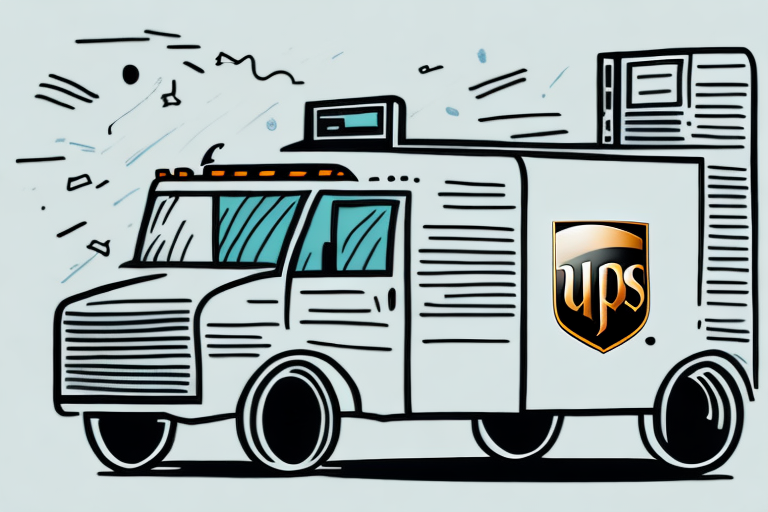How to Get Better Shipping Rates with UPS
If you run a business that ships products to customers, optimizing your shipping rates is crucial. Shipping costs can significantly impact your bottom line, and reducing these expenses can enhance your profitability and competitiveness within your industry. Partnering with UPS, one of the largest and most reliable shipping carriers globally, is a strategic way to achieve better shipping rates. This article explores how to secure improved shipping rates with UPS, offering practical tips and strategies to help you optimize your shipping costs.
Understanding the UPS Shipping Rates Structure
Before diving into strategies for improving your shipping rates with UPS, it's essential to comprehend how their rates are structured. UPS rates are influenced by several factors, including:
- Package Weight: Heavier packages incur higher shipping costs.
- Distance Traveled: UPS uses a zone-based system where shipping costs increase with the distance between the origin and destination.
- Service Level: Faster delivery options like next-day air are more expensive than standard ground services.
- Package Dimensions: Larger packages take up more space on delivery trucks, leading to higher costs.
- Additional Services: Services such as signature confirmation, insurance, and Saturday delivery add to the overall shipping cost.
Understanding these factors enables you to make informed decisions to optimize your shipping expenses. Additionally, UPS offers discounts for high-volume shippers and businesses utilizing their online shipping tools, which can further reduce your shipping costs.
Why It's Important to Negotiate Shipping Rates with UPS
Negotiating shipping rates with UPS is essential for several reasons:
- Cost Savings: Lowering your shipping rates directly increases your profit margins.
- Competitive Advantage: Reduced shipping costs allow you to offer more competitive pricing to your customers.
- Stronger Relationships: Building a good rapport with UPS can lead to better customer service and faster delivery times.
By negotiating rates that align with your business needs, you ensure that your shipping costs contribute positively to your overall business strategy.
Tips for Negotiating Better Shipping Rates with UPS
Negotiating better shipping rates with UPS requires preparation and strategic planning. Here are some effective tips:
- Gather Data: Have detailed information about your shipping volume, package sizes, and destinations to present a clear case for discounts.
- Explore Service Levels: Assess different UPS service options to find the most cost-effective solutions that meet your delivery requirements.
- Bundle Shipments: Combining multiple packages destined for the same location can lead to significant cost savings.
- Build Relationships: Maintain open and respectful communication with your UPS representative to foster a mutually beneficial partnership.
How to Analyze Your Shipping Data to Improve Your UPS Rates
Analyzing your shipping data is a powerful way to identify opportunities for reducing costs. Consider the following strategies:
- Identify Shipping Patterns: Look for trends in your shipping volume and destinations to negotiate better rates based on consistent patterns.
- Optimize Delivery Times: Tracking delivery times can help you adjust your shipping strategy to avoid delays that increase costs.
- Use UPS Tools: Utilize UPS’s online tools and software to analyze your shipping data effectively. Tools like the UPS Shipping Calculator can provide valuable insights into your shipping expenses.
Strategies for Reducing Your Shipping Costs with UPS
Implementing the right strategies can lead to substantial savings on your UPS shipping costs:
- Seek Alternative Shipping Routes: Shipping through different routes, such as international options when appropriate, can be more cost-effective.
- Utilize Volume Discounts: Take advantage of UPS’s volume discounts by consolidating shipments.
- Compare Rates and Services: Use the UPS website or mobile app to compare rates and select the most economical shipping options.
- Adopt Smart Pickup: UPS’s Smart Pickup service can save you time and transportation costs by automating package pickups.
How to Choose the Right UPS Service Level for Your Business Needs
Selecting the appropriate UPS service level is critical to balancing cost and delivery speed:
- Assess Delivery Speed Needs: If fast delivery is essential, services like UPS Next Day Air may be suitable. For more cost-effective options, consider UPS Ground services.
- Consider Package Size and Weight: For larger or heavier packages, services like UPS Freight, including LTL and FTL options, may be more appropriate.
- International Shipping: For global shipments, UPS Worldwide Express offers reliable delivery to over 220 countries and territories.
How to Use UPS Technology Tools to Optimize Your Shipping Rates
Leveraging UPS’s technology tools can optimize your shipping strategy:
- UPS Shipping Calculator: Estimate shipping costs based on package dimensions, weight, and destination using the UPS Shipping Calculator.
- Real-Time Tracking: Monitor your shipments in real-time to ensure timely deliveries and identify any potential delays.
- Shipping Software: Utilize UPS’s shipping software to streamline your shipping processes and gain better insights into your shipping data.
Ways to Bundle and Consolidate Shipments to Save on UPS Costs
Bundling and consolidating shipments can lead to significant cost savings:
- Combine Multiple Packages: Shipping several packages to the same destination as a single shipment reduces overall shipping costs.
- Use Larger Containers: Consolidating shipments into larger containers lowers costs on a per-package basis and minimizes the risk of loss or damage.
How to Compare and Benchmark Your UPS Rates Against Competitors
Benchmarking your UPS rates against industry standards can identify areas for improvement:
- Study Industry Trends: Understanding current shipping trends helps you negotiate better rates based on market conditions.
- Analyze Competitor Rates: Comparing your shipping costs with those of competitors can highlight opportunities for negotiation or alternative shipping strategies.
Common Mistakes Businesses Make When Negotiating with UPS for Better Rates
Avoiding common pitfalls can enhance your negotiation success with UPS:
- Lack of Preparation: Failing to understand your shipping data or lacking proper documentation can weaken your negotiation position.
- Misunderstanding Contracts: Not fully grasping the terms of UPS contracts can lead to unfavorable agreements.
- Neglecting Relationships: Poor communication with UPS representatives can hinder the negotiation process.
The Benefits of Partnering with a Third-Party Logistics Provider for Better UPS Rates
Collaborating with a third-party logistics (3PL) provider can offer several advantages:
- Access to Pre-Negotiated Rates: 3PL providers often have existing agreements with shipping carriers, including UPS, enabling you to benefit from reduced rates.
- Enhanced Negotiating Power: Leveraging a 3PL’s relationships with carriers can lead to more favorable shipping terms.
- Additional Incentives: 3PL partnerships can provide access to incentives and services not typically available to individual businesses.
Understanding the Impact of Fuel Surcharges on Your UPS Shipping Costs
Fuel surcharges can significantly affect your UPS shipping expenses. These surcharges cover fluctuating fuel prices and are an additional cost on top of standard shipping rates. To manage fuel surcharges effectively:
- Optimize Delivery Routes: Efficient routing can minimize fuel usage and associated surcharges.
- Consolidate Shipments: Reducing the number of trips through shipment consolidation lowers fuel consumption.
- Monitor Fuel Prices: Staying informed about fuel price trends helps you anticipate surcharges and adjust your shipping strategy accordingly.
How to Plan and Forecast Your Shipping Volume to Secure Better Rates with UPS
Accurate forecasting of your shipping volume is key to negotiating better rates with UPS:
- Analyze Sales History: Review past sales data to predict future shipping volumes.
- Consider Seasonal Trends: Account for peak seasons when shipping volumes are likely to increase.
- Leverage Forecasting Tools: Use forecasting tools to project your shipping needs accurately, providing a solid foundation for rate negotiations.
Best Practices for Managing Your Relationship with UPS and Securing Ongoing Rate Improvements
Maintaining a strong relationship with UPS is essential for securing ongoing rate improvements:
- Maintain Open Communication: Regularly engage with your UPS representative to discuss your shipping needs and any potential rate adjustments.
- Monitor Shipping Data: Continuously track your shipping metrics to identify trends and areas for cost optimization.
- Stay Informed: Keep up-to-date with UPS’s latest services and discounts to take advantage of new opportunities for savings.
In conclusion, optimizing your shipping rates with UPS is vital for enhancing your business's profitability and competitiveness. By negotiating your shipping rates, analyzing your shipping data, and selecting the appropriate service levels, you can effectively manage and reduce your shipping costs.




















